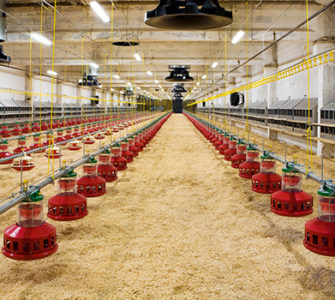Uncertain supplies present challenges for rotation-minded producers
Poultry producers know the importance of developing a long-term strategy for maintaining the efficacy of anticoccidials, but sometimes unexpected backorders of feed medications in high demand force poultry companies to resort to plan B or C.
In some instances, that can lead to less than optimal flock welfare and performance, Phil Stayer, DVM, Sanderson Farms, told Poultry Health Today. It all depends of what medications were used recently — either earlier in the flock’s life or in previous production cycles — and what other options remain in that poultry company’s production system.
Stayer said he’s fortunate because he generally has more options to consider than some other poultry veterinarians. For example, because none of Sanderson Farms’ birds are deliberately raised in “no antibiotics ever” (NAE) production systems, he and his veterinary colleagues can lean on a full spectrum of FDA-approved medications for necessary preventive medicine — such as coccidiosis and other enteric diseases. Veterinarians working in NAE production schemes have fewer options.
Involuntary NAE
But even with greater flexibility, Stayer is worried about consistent product availability for the 11 million birds Sanderson Farms sends to market each week. In some cases, he added, they’ve had to raise flocks without antibiotics — usually a non-ionophore anticoccidial or vaccine — if the ionophore they wanted was not immediately available.
It can work the other way, too, he said. Sometimes the rotation program calls for a non-ionophore anticoccidial or vaccine, but those products also get backordered.
When backorders happen, Stayer said, “We can get by but it’s not going to be best.” He’s also concerned that in some situations, flocks could suffer when disease-control options are compromised.
Stayer acknowledged that the surge in NAE production has probably made it more difficult for animal health companies to keep pace with the changing needs of the industry. At the same time, he expressed concern that the industry’s move away from antibiotics could cause supplies of some feed medications to become even less stable in the future.
“Someday, I’ve got to wonder, if there’re going to be any of these conventional [production] products available, and then we’re going to have to go antibiotic-free — not because we want to but because that’s all that’s available,” he said.
Saturation point
Stayer predicted that eventually, the US market for poultry meat from NAE production systems is going to reach a saturation point — much in the way cage-free eggs did following a surge in production.
“In terms of meat, more [poultry raised without antibiotics] is being produced than is being sold…” and if producers can’t command a premium for NAE birds, which generally cost more to produce, they could return to conventional production that allows the use of FDA-approved poultry medications under the supervision of a veterinarian.
Considering current trends, “The question is: Are there going to be conventional medicines to come back to?” Stayer asked.
Editor’s note: The opinions and recommendation presented in this news article and accompanying video are Dr. Stayer’s and not necessarily shared by the editors of Poultry Health Today or its sponsor.
Posted on October 11, 2018

















